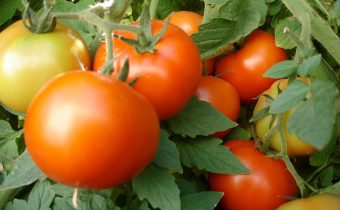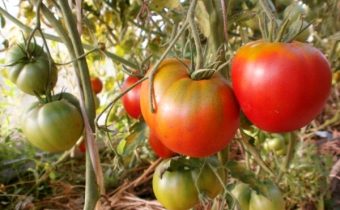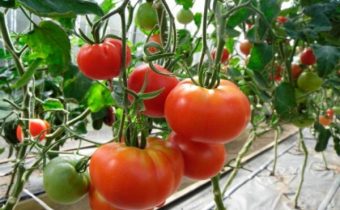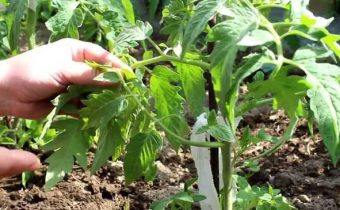How to increase ovary on tomatoes with folk remedies
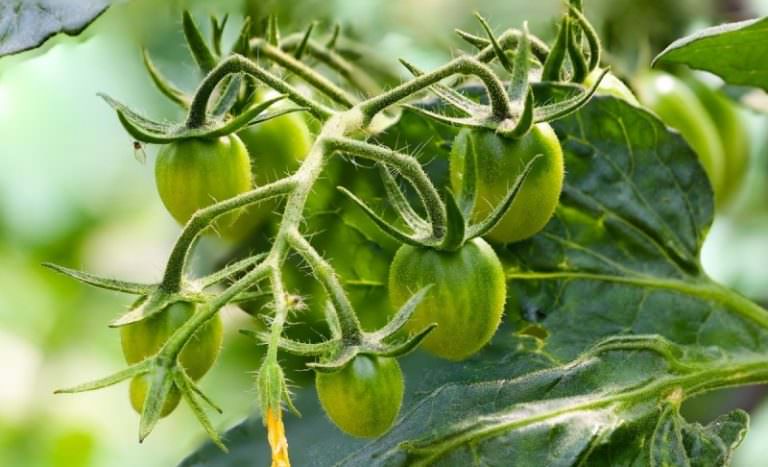
The period of formation of ovaries and the laying of the first cells of the fetus is perhaps one of the most important phases in the development of tomato plants and an important stage on the way to obtaining good yields.
Applying proven folk remedies during this period, one can avoid such problems as: poor formation of ovaries or their abscission. The range of recipes from simple and improvised means is so large that it makes it easy to avoid a problem or cope with it, regardless of the reasons for its occurrence.
What do tomatoes need for a good ovary?
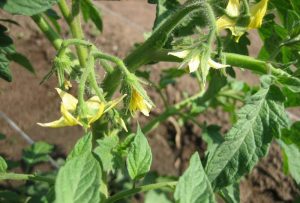 Tomatoes belong to the Solanaceae family and are a self-pollinated crop, that is, for pollination, they need only their own pollen and do not need the help of insects. However, in order for this process to take place actively and without disruption, the growing conditions must be as close as possible to the natural conditions of the southern countries, from which this vegetable crop was brought. A suitable microclimate consists of the following climatic parameters and conditions:
Tomatoes belong to the Solanaceae family and are a self-pollinated crop, that is, for pollination, they need only their own pollen and do not need the help of insects. However, in order for this process to take place actively and without disruption, the growing conditions must be as close as possible to the natural conditions of the southern countries, from which this vegetable crop was brought. A suitable microclimate consists of the following climatic parameters and conditions:
- air and ground temperature;
- air humidity;
- lighting;
- air exchange (air circulation).
In addition, for the formation of a large number of ovaries, tomato bushes must be properly formed and get enough moisture and nutrients.
The homeland of tomatoes is South America, where wild forms of culture are still found. The plant came to Russia only in the 18th century and was originally grown as a decorative species.
Possible causes of poor ovary formation in open ground
Tomato bushes, densely strewn with color, still do not guarantee a bountiful harvest. Pustad, most often noted in tomatoes growing under cover, but growers of tomatoes in ordinary garden beds face such a problem. The reasons for this are the following factors:
Adverse temperature conditions
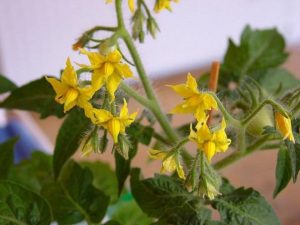 Too high as well as too low temperatures adversely affect the growth and development of tomato plants, which in turn directly affects the formation of ovaries. The optimum temperature for a vegetable is 23-24 ° C during the day and 18-19 ° C at night. At low temperatures, the growth of tomatoes slows down, as a result, the flowers become smaller, and the anthers are modified and showered. High temperatures sterilize pollen, after which it becomes unsuitable for pollination.
Too high as well as too low temperatures adversely affect the growth and development of tomato plants, which in turn directly affects the formation of ovaries. The optimum temperature for a vegetable is 23-24 ° C during the day and 18-19 ° C at night. At low temperatures, the growth of tomatoes slows down, as a result, the flowers become smaller, and the anthers are modified and showered. High temperatures sterilize pollen, after which it becomes unsuitable for pollination.
It is much more difficult to regulate the temperature regime in open beds than indoors, but it is still possible. So, the following measures will help to transfer the plants a long and exhausting heat:
- increase the frequency of watering;
- mulch the soil in the garden;
- above the plantings, stretch the shade net or cover each bush with dry grass or straw.
If cold weather is expected or frosts in the beds set the arc and stretch the covering material. For tall tomatoes, sheltering which is not possible there are other ways:
- mulch beds with rotten hay;
- conduct evening watering with warm water;
- in the beds lay out plastic bottles with hot water.
High or low humidity
For good pollination and formation of ovaries, humidity of 60-65% is necessary. Dryer air prevents the germination of pollen, and excessively wet air causes it to stick together, as a result of which it cannot scatter. When grown in open ground, regular watering will help to avoid low humidity. The most difficult is to keep the humidity at a normal level in rainy years. This can be done using the following farming practices:
- adherence to planting schemes (do not plant bushes too often);
- timely pasynkovanie;
- reduction or cessation of irrigation;
- regular loosening of the soil;
- construction of canopies that protect against rain for low-growing varieties;
- tall bushes from the rain can be covered individually (sew a bag of lutrasil or spunbond and put on the top, pull off the root at the root).
Lack of sunlight
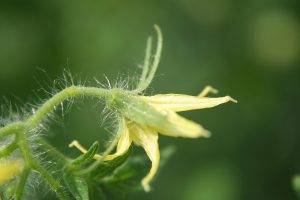 An insufficient amount of sunlight leads to a violation of photosynthesis in plants, as a result they weaken and lose the ability to form a large number of ovaries. The reasons for insufficient light can be a thickened landing, as well as illiterate formation of the bush. To avoid this, it is necessary to arrange the plant in one or several main stems, depending on the variety, and to observe the location of the plants in the garden in accordance with the recommendations of the originator. In addition, during the entire growing season it is necessary to carry out such agrotechnical reception as “lightening of the bushes”. The procedure is to remove the leaves under the already formed fruit brushes.
An insufficient amount of sunlight leads to a violation of photosynthesis in plants, as a result they weaken and lose the ability to form a large number of ovaries. The reasons for insufficient light can be a thickened landing, as well as illiterate formation of the bush. To avoid this, it is necessary to arrange the plant in one or several main stems, depending on the variety, and to observe the location of the plants in the garden in accordance with the recommendations of the originator. In addition, during the entire growing season it is necessary to carry out such agrotechnical reception as “lightening of the bushes”. The procedure is to remove the leaves under the already formed fruit brushes.
Sugar content of tomatoes directly depends on the amount of sunlight. Therefore, tomatoes grown in open ground, sweeter and more fragrant than those that grow in a greenhouse or greenhouse.
Deficiency or excess of nutrients in the soil
Failure to comply with the norms, proportions and the frequency of application of fertilizing is a common mistake in the cultivation of tomatoes. Excess nutrients lead to disruption of the growing season, provokes such a state as "fattening tomatoes" and contributes to the accumulation of nitrates in fruits. Especially dangerous is the glut of soil with nitrogen. In this case, the plants are intensively increasing the green mass and are in no hurry to bloom and bear fruit.
The lack of trace elements leads to a weakening of the plants, the fall of color and drying of the ovaries. It is especially important to provide tomatoes during flowering and the formation of ovaries with such substances as: phosphorus, potassium, manganese and boron.
By the appearance of the plant is easy to determine the imbalance of nutrients. So, about greasing says rich green color of the leaf, powerful stems and twisted leaves on the top of the plants. The deficiency of trace elements is manifested by brown spot on the sepals of flowers, their yellowing and drying of the pedicels. When nitrogen deficiency bushes look weak and grow slowly.
How to help tomatoes with excess nutrients?
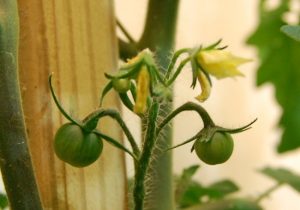 If the tomatoes began to "fatten" the situation can be corrected by reducing the number of waterings, and making the following compounds:
If the tomatoes began to "fatten" the situation can be corrected by reducing the number of waterings, and making the following compounds:
- Superphosphate is diluted in 10 liters of water and sprayed in the bushes in the morning. Such foliar dressing will keep the growth of plants and help the fruit to develop;
- 400 grams of wood ash is poured with two liters of water and heated to boiling. Then the resulting solution is brought to a volume of 10 liters. Apply this tool to spray tomato bushes. Ash infusion will restore the balance of nutrients.
How to feed tomatoes for fruit set (folk remedies)
To compensate for the lack of micro-and macro-elements, and increase the number of ovaries on tomatoes by the following folk remedies:
- Infusion of bird droppings. 10 kg of litter is added to 10 liters of water and infused for two days. Fertilizer is applied in a diluted form of 1:10.On one bush enough two liters of solution.
- The skins from five bananas are poured with five liters of water and infused for two days. On one bush enough 0.5 liters of such potash fertilizer.
- Eggshell poured boiling water, at the rate of one liter per tablespoon of shell. Comprehensive fertilizer will be ready for use in three days. Consumption for each plant 0.5 liters.
From foliar top dressings the most effective for the formation of ovaries according to experienced gardeners are:
- Add one liter of sour milk and 15 drops of iodine to a bucket of water. The resulting composition is abundantly sprayed bushes.
- per liter of distilled water add a tablespoon of honey. Honey solution sprayed tomatoes during flowering.
Separately, you can select foliar feeding boric acid. This tool can not be called popular, but it is very effective and harmless for future vegetables. To prepare a solution, 5 grams of the substance is dissolved in 5 liters of warm water. Spray bushes three times: during budding, flowering and at the time of formation of ovaries.
Other factors of poor ovary formation
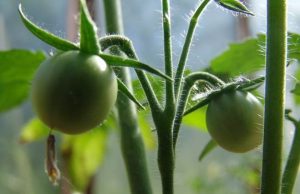 In addition to the above reasons, other factors may also affect the lack of ovaries. For example, the use of poor-quality seed. Often, growers collect seeds not only from varietal tomatoes, but also from hybrid plants. From such seeds a generation grows that cannot bear fruit. When collecting seeds from varietal plants, there are also nuances. So, if from year to year to collect the same variety of tomatoes, over time, the quality of seedlings will begin to decline and the number of ovaries will noticeably decrease. Experts call this phenomenon - "plant fatigue."
In addition to the above reasons, other factors may also affect the lack of ovaries. For example, the use of poor-quality seed. Often, growers collect seeds not only from varietal tomatoes, but also from hybrid plants. From such seeds a generation grows that cannot bear fruit. When collecting seeds from varietal plants, there are also nuances. So, if from year to year to collect the same variety of tomatoes, over time, the quality of seedlings will begin to decline and the number of ovaries will noticeably decrease. Experts call this phenomenon - "plant fatigue."
Another common cause of shedding ovaries are tomato diseases and pests. Of the illnesses, fungal infections are the most dangerous, which lead to the rotting of various parts of the plant, including flower and fruit brushes. The diseased plant weakens, struggles to survive, and therefore resets color and ovary. When attacking insects, a similar pattern is formed: bushes weakened by parasites deliberately destroy the emerging fruits at the ovary stage in order to preserve vitality.
Seed collection for further cultivation of tomatoes produced only with varietal plants. For this, the healthiest, strongest and fruitful bushes are observed and selected during the season. Agrotechnics consider the best for breeding vegetables, taken from the second fruit brush. It is important that the fruit matches the characteristics of a particular variety.
Ovary Conservation Measures
If tomato bushes grow in normal conditions and get everything you need, then the flowering will be lush, and the formation of ovaries is active. In order for the resulting fruits to grow and develop normally and not crumble from the bushes, vegetable patches should be carefully looked after and some recommendations should be followed:
- water temperature for irrigation should be at least 23-24 degrees, the use of cold water causes stress in tomatoes;
- it is necessary to inspect the bushes for infection and attack by pests and, if necessary, take immediate action;
- correctly form the bushes and regulate the number of ovaries (no more than 4-6 fruit brushes should be placed on one bush at a time).
Tips and secrets for better tomato ovary
- You can collect seeds of one variety on your own for no more than three years in a row. Then you need to update the seed fund, acquiring seeds of proven agrofirms.
- Can not be used for irrigation of chlorinated water, it adversely affects the condition of the plants.
- Do not place tomato beds in the shade of trees or tall shrubs.
- For better pollination during flowering is recommended to shake the bushes or flower brushes.
- Foliar fertilization is much more effective if they are carried out in the morning in calm weather.
- If the tomato bushes are not yet strong, and the first flower brush is already formed, experts recommend cutting it off, so the plant adapts faster and forms a larger number of ovaries.
- In order to fill the tomatoes and ripen in a faster time, the plants are sprayed with iodine solution (25 drops per 10 liters of water) and fed with ashes (a handful of ashes are sprinkled under each bush before watering).
After examining all the factors of poor formation of ovaries, each vegetable grower can avoid this. To achieve maximum yield of tomatoes, you can use simple folk remedies and listening to the advice of experienced gardeners and specialists.


